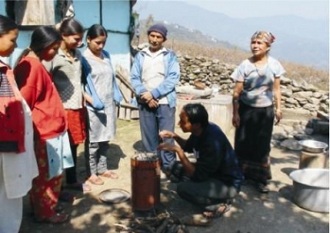‘Illegal’ paraffin stoves a safety risk
Thousands of “illegally imported” paraffin stoves are flooding the South African market, crippling the local metal industry and posing health risks in poorer communities.
The Paraffin Safety Association of South Africa (Pasasa) told the Weekend Argus that it has been visiting stores to assess the availability of legal paraffin appliances and discovered that out of the 141 stores visited, only one in 14 was selling legal appliances.
According to Pasasa there is an “influx of unapproved and hazardous” paraffin appliances, apparently making their way from China to South African ports.
“These dangerous stoves are being sold to underprivileged communities all over the country. They are mostly found in local Indian and Chinese shops,” said Patrick Kulati, head of the association.
A South African stove manufacturing company, which is approved by the SABS, described the issue as a “hard blow” to the industry.
A senior manager, who asked not to be named or have the company named because she feared harassment from the illegal operators, said: “We continue to lose more money daily due to the illegal sale of the goods. Nowadays we sell less than we did previously.”
The manufacturer said it struggled to compete with the illegal market and that “there are just too many of the cheap products for us to compete with”.
The manager said the company was the only recognised stove manufacturer in the country.
She said they had been forced to retrench nearly 300 people in the last five years because the profit fall had been “massive”. She blamed the unsafe imports
“Now a lot of people are unemployed because no money is coming in to continue operations, consumers are opting for the cheaper lot,” she said.
The National Regulator for Compulsory Specifications (NRCS) said it was confiscating thousands of unapproved stoves daily across the country.
“Our inspectors have managed to seize quite a large number of stoves and none of them have the safety features required,” said Thomas Madzivhe, NRCS senior manager.
In May this year, a Chinese shop owner and three others were arrested after the regulator seized 8 000 “non-compliant” stoves and heaters in the shop in Cape Town. The stoves violated a set of safety standards which state that the manufacturing, sale and use of environmentally friendly stoves should pose no health risk to the consumer.
The unapproved stoves are the ones being snapped up by people who want to save money, Pasasa said.
The association added the goods were exact counterfeits of the harmful ones previously made by the local company until the National Regulator presented a new set of safety standards.
The illegal importers “saw a gap in the market and decided to make the most of it and now the whole country is at huge risk”.
“People in many communities are attempting to evade financial troubles and are seeking cheaper alternatives and unfortunately they are not always safe. The influx (of illegal stoves) has made matters worse.
“The effects have already been felt by most people. Fires mostly take place due to the use of these duds and because people are unaware of their hazardous nature they purchase them,” said Kulati.
He added his organisation had discovered the importers’ tactics. “They put on road shows in rural and township areas and sell their faulty goods to the people. They do this because there would be no paper trail for police to nab them.”
It is alleged the appliances are smuggled into the country at habours in PE and Durban.
Customs officials are told that the goods are to be sent to neighbouring countries, but they are then dropped in South Africa.
But the National Regulator said although it did make inspections at ports countrywide, it could not confirm this, but would continue inspections.
And Pasasa said there were plans by the National Regulator to approach the Chinese and Indian embassies to try and work out a solution to the problem.
Source – http://www.internafrica.org/2009/08/illegal-paraffin-stoves-safety-risk.html



